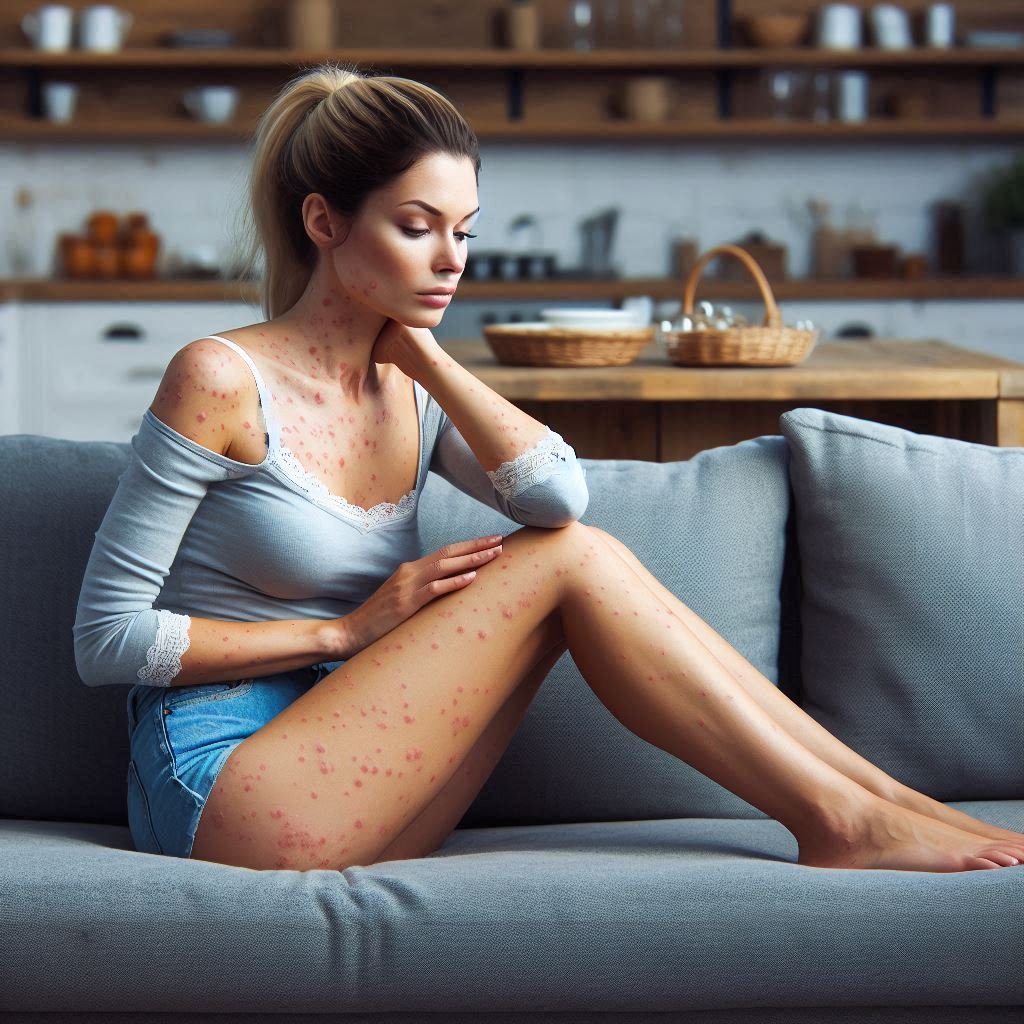
Perioral dermatitis may be a form of the skin disorder rosacea, adult acne or seborrheic dermatitis, involving the skin around the mouth or nose. Common chemical irritants include detergents, soaps, chlorine, some synthetic fibers, nail polish remover, antiperspirants, and formaldehyde (found in permanent-press fabrics, polishes, artificial-fingernail adhesive, particle board, and foam insulation). Wearing rubber gloves, unwashed new clothes, or plated jewelry can also cause contact dermatitis. Many types of dermatitis. Contact dermatitis typically causes the skin to develop a pink or red rash. Pinpointing the exact cause of contact dermatitis can be difficult. Among plants, the leading culprits are poison ivy, poison oak, and poison sumac, although contact with certain flowers, herbs, fruits, and vegetables irritate some people. Nummular dermatitis consists of distinctive coin-shaped red patches that are most commonly seen on the legs, hands, arms and torso.
The exact cause is unknown, but makeup, moisturizers, topical corticosteroids or some dental products containing fluoride may play a role. Atopic dermatitis, or eczema, causes the skin to itch, scale, swell and sometimes blister. Eczema usually runs in families and is often associated with allergies, asthma, and stress. Seborrheic dermatitis consists of greasy, yellowish, or reddish scaling on the scalp and other hairy areas, as well as on the face or genitals, and in skin creases along the nose, under the breasts. is caused by an overproduction and blockage of oil glands. This condition is called cradle cap in infants and is likely related to hormonal changes affecting the glands. It may be aggravated by stress. Stasis dermatitis is caused by poor circulation and can happen in people with varicose veins, congestive heart failure, or other conditions. Veins in the lower legs fail to return blood efficiently, causing pooling of blood and fluid buildup and edema. This leads to unhealthy skin growth and irritation, especially around the ankles.
Treatment of Dermatitis:
1. Bathing Reduce how often you bath or shower, using lukewarm water.
2. Replace standard soap with a substitute such as a mild detergent soap-free cleanser.
3. Clothing Wear soft smooth cool clothes; wool is best avoided.
4. Apply an emollient liberally and often, particularly after bathing, and when itchy.
5. Apply a topical steroid cream or ointment to the itchy patches for a 5 to 15 day course. Steroids should usually be applied once or twice daily to the red and itchy areas
6. Pimecrolimus cream is a new anti-inflammatory cream shown to be very effective for atopic dermatitis.
7. Antihistamine tablets may help reduce the irritation, and are particularly useful at night.
8. Sometimes, creams containing hydrocortisone or wet dressings that provide moisture to your skin may help relieve redness and itching.
Home Remedies of Dermatitis:
1. Apply a mixture of 1 teaspoon camphor and 1 teaspoon sandalwood paste on the rashes. Apply nutmeg paste to the affected areas. Put natural vitamin E on the affected skin, it will relieve you of itching. Zinc taken orally and applied directly on the affected skin is effective.
2. Oatmeal baths made from powders such as Aveeno provide effective but temporary relief from the itching of eczema and dermatitis
3. Apply cod liver oil, vitamin E oil, or aloe vera gel to affected areas.
4. Take chickweed, dandelion, red clover, Redmond clay, and yellow dock in capsule form.
5. Shark cartilage reduces inflammation.
6. Use a lotion made out of blueberry leaves this is proven to be fantastic relieving inflammation of dermatitis.




